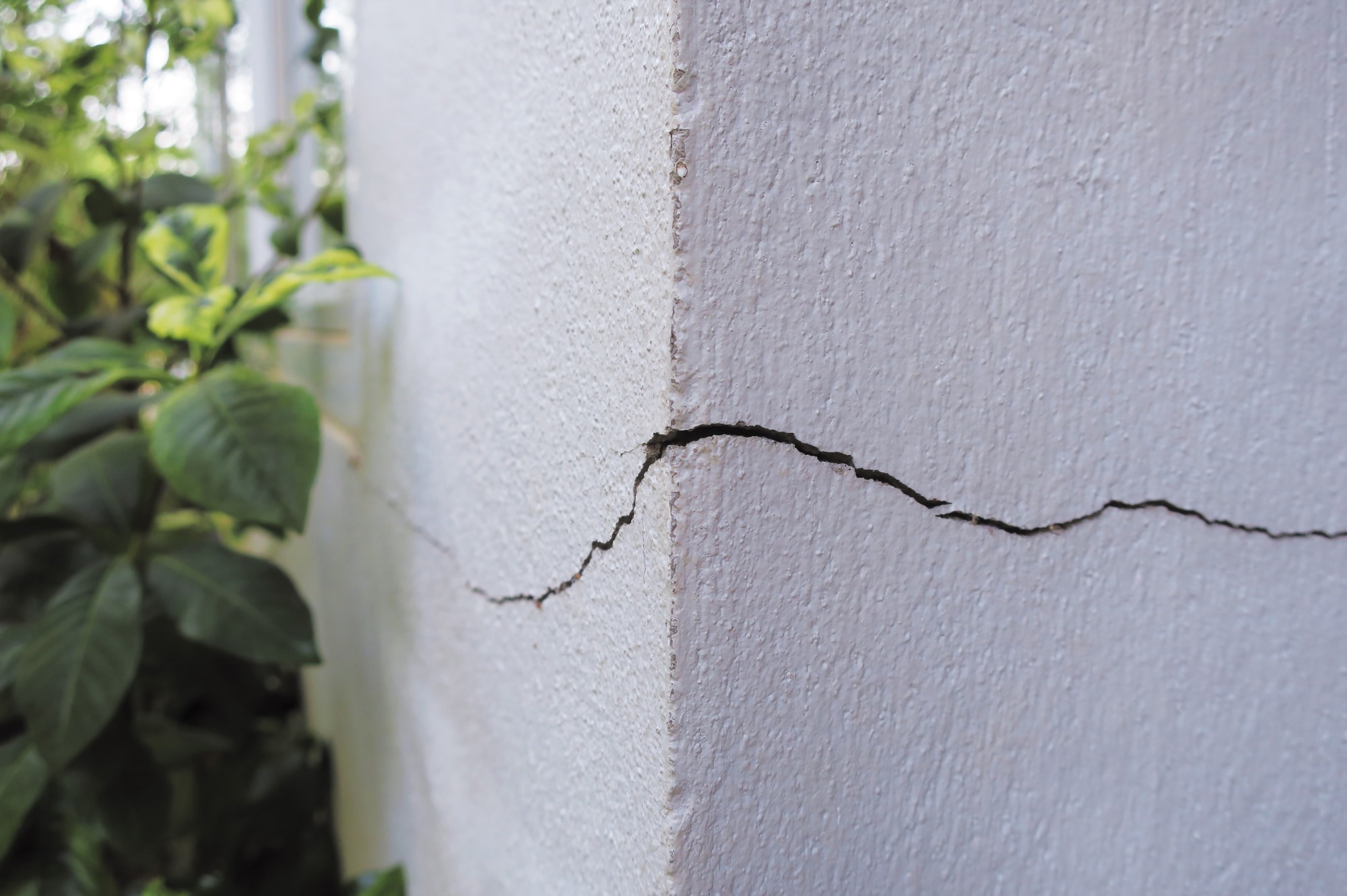 By Pooja Toshniwal PahariaReviewed by Lauren HardakerAug 27 2025
By Pooja Toshniwal PahariaReviewed by Lauren HardakerAug 27 2025A recent study published in Frontiers in Microbiology investigated the critical factors governing Bacillus pasteurii (now Sporosarcina pasteurii) spore germination. They also clarified the bacterium’s mechanisms of impermeability to advance microbially induced calcium carbonate (CaCO₃) precipitation (MICP)-based self-repairing concrete.  Study: Optimizing Bacillus pasteurii spore germination and unveiling impermeability mechanisms in microbial self-healing concrete. Image credit: TA BLUE Capture/Shutterstock.com
Study: Optimizing Bacillus pasteurii spore germination and unveiling impermeability mechanisms in microbial self-healing concrete. Image credit: TA BLUE Capture/Shutterstock.com
They found that microbial capsules enhance mortar viscosity and stability and that germinated cells serve as nucleation spots for CaCO₃ within pores. Progressive mineralization seals the cracks, refines the pore structure, and enhances mechanical strength and durability. This in situ bacterial activity enables autonomous crack repair, reduces water ingress and corrosion, and contributes to sustainability goals by potentially lowering maintenance needs and lifecycle CO2 emissions.
Concrete is widely used in construction but is susceptible to cracking from shrinkage, thermal stress, and mechanical loading. This creates pathways for water and aggressive agents that accelerate corrosion and structural deterioration. Given the high CO₂ emissions associated with cement production and the increasing repair costs, self-healing concrete could improve durability and sustainability.
MICP offers a promising autonomous crack-sealing approach, with Sporosarcina pasteurii being a key candidate due to its high urease activity and resistance against damage in alkaline environments. However, the factors affecting spore germination and the mechanisms underlying impermeability and crystallization remain insufficiently characterized.
About The Study
In the present study, researchers evaluated key parameters influencing S. pasteurii-mediated MICP to develop an efficient bio-concrete system and investigated spore germination and impermeability.
To assess spore germination, the researchers prepared a microcapsule suspension using sterilized deionized water at a concentration of 2.0 g/L. They selected inosine as the germination agent due to its ability to stimulate the spores of B. pasteurii. Optical density (OD) at 490 nm, measured using a microplate reader, indicated spore germination.
The team conducted various tests to assess the effects of thermal stimulation and nutrients such as calcium on spore outgrowth. They subjected the spores to 50°C heat for 1 minute, which promoted germination, whereas longer treatments (≥3 minutes) suppressed germination under alkaline/Na+ conditions. Heat alone (without inosine) could still trigger germination, although combining heat with alkaline or nutrient conditions sometimes reduced efficiency. Hourly OD490 recordings were taken to calculate germination rates.
The researchers designed concrete mortar samples in eight control and fracturing test groups based on the germination results. The samples incorporated dried microcapsules of varying dosages and particle sizes. The team ground the spore-comprising microcapsules into a suspension and mixed them with a spore sprouting medium before injecting them into pre-cut rock fractures. Spores were first germinated in 2 g/L inosine at pH 10. After 24 hours, the mixture was injected and cured for two weeks with a pH nine nutrient solution (urea 15.62 g/L, yeast extract 2 g/L, CaCl2 22.5 g/L) to evaluate repair efficiency.
To evaluate impermeability performance, the team assessed mortar rheology, using cement, water, and sand mixed at 1:0.5:1.64 (mass ratio), with 300 µm microcapsules incorporated into selected samples. To analyze flow behavior, they performed rheological measurements, including shear and oscillation tests.
Mercury intrusion porosimetry (MIP) characterized the pore structure of the microbially treated mortar to determine the pore size distribution, total pore volume, and porosity. Scanning electron microscopy (SEM) revealed microstructural features, including microbial calcium carbonate precipitation and the filling of pores and fractures by MICP products in cement mortar and microcapsule-containing samples.
Results
A microcapsule dosage of 2.0 g/L germinating B. pasteurii spores with 1.0 g/L of inosine at a pH of 8 produced the most effective crack repair in mortar-injected rock fracture specimens. Inosine significantly promoted spore germination, thereby enhancing mineralization and self-healing efficacy.
Optimal germination occurred at 0.5-1.0 g/L inosine, whereas higher concentrations or highly alkaline conditions (e.g., pH 11) inhibited germination by suppressing the activity of vegetative cells. Although alkaline environments generally favored bacterial metabolism, lower pH conditions were more conducive to the initial germination process.
Brief heat (~1 minute at 50°C) facilitated germination within ~2-4 hours, whereas ≥3 minutes suppressed it; intriguingly, heat alone could still trigger germination. In some conditions, combining heat with alkaline or nutrient supplementation reduced efficiency rather than enhancing it. Calcium ions did not significantly inhibit germination in the presence of sodium ions (4.0 g/L), suggesting that appropriate stimulation of membrane protein receptors can overcome potential Ca²⁺-related inhibition within concrete environments.
Rheological tests revealed that microbial mortar had higher yield stress and composite viscosity than ordinary mortar. The MIP analysis revealed permeability and backbone fractal dimensions of 2.832 and 2.306, respectively, for the bacterial concrete, comparable to conventional concrete. The findings indicate that the microcapsules did not increase structural complexity. Moreover, microbial capsules reduced water absorption without compromising compressive strength.
SEM observations confirmed that B. pasteurii induced the formation of CaCO₃ crystals (aragonite and vaterite) that integrated with the cement matrix, refined the pore structure, reduced porosity, and enhanced hydraulic impermeability and mechanical strength. Microbial precipitates filled cracks and improved interfacial bonding within the concrete.
The study identified optimal nutrient and thermal conditions for Sporosarcina pasteurii spore germination. Bio-repair concrete demonstrated superior performance to conventional concrete. Microbial activity enhanced concrete density and durability by reducing porosity and permeability through CaCO₃ precipitation.
For broader adoption, future research should examine germination kinetics under real concrete environments, develop acclimatization strategies for extended viability, and assess cost-effectiveness and safety concerns, such as bacterial migration or byproduct formation.
Download your PDF copy now!
Journal Reference
Hu, Y., Liu, W., Zhang, Y., & Hu, X. (2025). Optimizing Bacillus pasteurii spore germination and unveiling impermeability mechanisms in microbial self-healing concrete. Frontiers in Microbiology, 16, 1653557. DOI: 10.3389/fmicb.2025.1653557 https://www.frontiersin.org/journals/microbiology/articles/10.3389/fmicb.2025.1653557/full